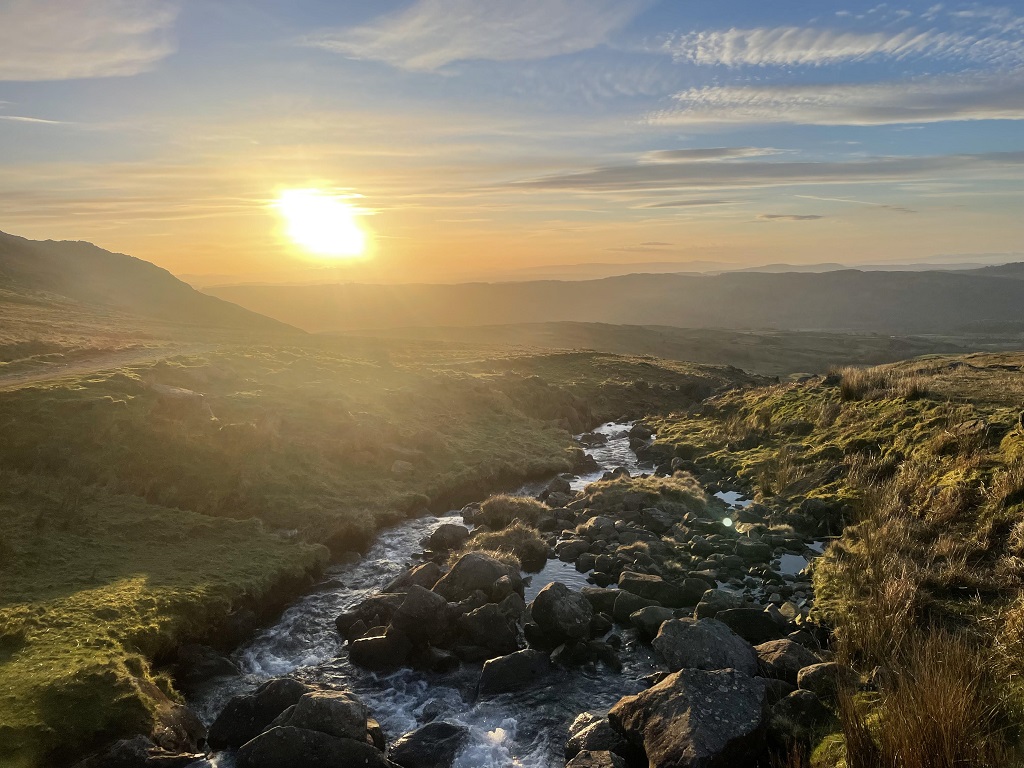The Subplot
The Subplot | Why solar farmers are heading North
Welcome to The Subplot, your regular slice of commentary on the business and property market from across the North of England and North Wales.
THIS WEEK
- Sky high special: solar farms, airports, and stratospheric investor ambition. Subplot is up in the clouds
- Elevator pitch: your weekly run down of what’s going up, and what’s heading the other way
SUN SPOTS
Why solar farmers are heading North
Neither Wigan nor Goole are known for their endless hours of sunshine. Yet this week both are the target of plans for solar power generation. Why?
A landfill site on the border of sun-kissed Wigan and heat-stroked Salford could soon be a 52-acre solar farm, if Green Earth Developments gets its way. Meanwhile proposals for a 120-acre solar farm have flared into life at Roxby, outside Goole. The proposal, backed by a Canadian business, will generate nearly 50MW. Unusually, the application is for grade two farmland (in other words, very good land). Most solar farms are on 3b land, which isn’t so special. It’s a sign that demand is extending beyond the usual boundaries. What’s going on?
The North may not be as sunny as the South, but it has other advantages. These include lower land prices, less competition from other property uses, and a thinly spread population – so fewer people to find thousands of shiny panels annoying, a point that clearly weighed with European Energy’s proposal for a solar farm next to a wind farm between Morecambe and Blackpool.
The North also offers the chance of an easier connection to the National Grid, and lots of customers. Thus the 10MW proposal for Wigan makes use of the existing power grid connection used by the landfill site to process its waste gas.
Operators were beginning to head North 10 years ago until a change to the coalition government’s subsidy regime checked progress. The economics have changed since, and now they’re back.
As usual, government policy is at the root of property market interest. The surge in proposals follows a U-turn, followed by a U-turn, in government thinking. The Conservatives had been more or less fine with solar farms until Liz Truss arrived in summer 2022 and announced an effective moratorium by suggesting the definition of the “best and most valuable” agricultural land should be extended to include the mid-grade 3b land which most solar farms occupy. (In case you’re wondering, grade four and grade five land tends to be poorer stuff: hilly, hard, and miles from the National Grid, so not much favoured). By December 2022, Rishi Sunak had replaced her and the Truss plan was dropped.
Since then the mood has improved considerably in the hotly contested fight to build solar farms that fall (just) under the 50MW threshold after which they become a big planning deal. In one ground-breaking decision ministers waved through a solar farm than touches Green Belt, over-ruling a planning inspector in a case in Hertfordshire. This is interesting because the National Planning Policy Framework says that solar farms are generally inappropriate for Green Belt. But obviously things are changing. Four months ago another appeal, this time in Essex, went the same positive way.
A tweak to government planning policy in January tipped the balance of presumption towards larger solar farms (meaning over 50MW capacity), which were deemed a “critical national priority.”
A similar tweak has improved changes for really small solar installations – on homes or businesses – many of which can now claim permitted development rights.
The Northern solar farm business starts from a smallish base. Although two of the UK’s largest are in Yorkshire – Kirkby Fleetham and Scurf Dyke, both topping 200 acres – the three Northern regions are not yet major players. Official data shows the North is home to just shy of 10% of the UK’s solar farms, generating around 2,500MW between them. Top performer is the North West with output of 1,549MW– a fact which flies in the face of meteorological logic, but fits neatly with consumption patterns and the power grid. The North East is next with 756MW, and Yorkshire trails on 359MW.
That said, look at a map of ground-mounted solar and Yorkshire and the North East plainly have a generous share of 50MV installations – Subplot counted 15 in Yorkshire. So maybe the balance is beginning to tilt North, or the government’s numbers are a bit messy.
There’s certainly plenty in the pipeline, particularly in the North East. SSE Energy Solutions is teeing up a plan for a 3MW facility at Teesside Airport, with potential to grow to 50MW. A similar project has just opened at Newcastle Airport, starting at 3MW with permission for 16MW. Not every plans meets with a happy reaction. Pilmoor Solar’s proposal for 50MW on a 200-acre site at Helperby, North Yorkshire, is attracting some heavy incoming fire.
For the record, the rule of thumb is that it takes 25 acres to produce 5MW, but obviously that depends on the location. A typical 50 MW solar farm is likely to cover anything from 100 to 200 acres, and will contain between 100,000 and 150,000 photovoltaic panels. These are tiddlers by global standards. The UK’s largest is going to be in Essex where there are proposals for a farm of just over 1,000 acres. Travel to the Gulf or India and you can be dazzled by desert farms covering 10,000 acres upwards. After all, they’ve got the weather on their side.
As January turned, the UK’s solar power capacity was 15.7GW. The government aims to reach 70GW of solar power by 2035. Globally, it’s reckoned that by 2027 solar will be the world’s dominant power source. Even so, there are limits to growth: the need to feed people is one, as Savills argues. But more pressing is the lack of a suitable national power infrastructure, as made clear in a tetchy letter to ministers from the House of Commons’ Environmental Audit Committee.
There’s scope for considerably more solar farming in the North – and the rash of proposals show that promoters are keen. Delivery may be more complicated.
 ELEVATOR PITCH
ELEVATOR PITCH
Going up, or going down?
This week everyone’s in the stratosphere. Investors are refilling their war chests ready to spend in the supermarket sector, while Doncaster Sheffield Airport could be on the brink of taking off – if an operator can be found. Doors closing, going up, up, up.
 The weekly shop
The weekly shop
You probably missed the news, but earlier this week the Horse & Jockey pub in Walsall was sold by Marstons to Lidl. A 24,490 sq ft supermarket will replace the pub on a five-acre site very soon.
Pubs all over the UK are targets as the discounters scrape the bottom of each and every barrel (ahem) in the search for sites – often in direct competition, as in Bradford where we learned this week that an accident repair centre earmarked for Lidl is now going to Aldi.
The supermarket property market absorbed an astonishing £2.1bn investment in 2023, a fair chunk of it coming from retailers buying back their own leases, and this year could be even better. Supermarket Income REIT plc, the real estate investment trust looking for long-dated income from grocery floorspace, chose yesterday to reveal that it has increased its unsecured facility with Sumitomo Mitsui Banking Corporation by £37.5m, taking the total line of credit to £104.5m. This is interest-only and matures in September 2026, thus guaranteeing some buy/sell action. The REIT has a loan-to-value ratio of 34% which, in a booming sector, is pretty keen.
With the grocery sector growing at 8% (says Kantar), only a handful of prime locations, planning restrictions keeping supply down, and construction costs staying high, it’s never been a better time to buy into larger format stores. Expect more fundraising and extended lines of credit, and keep an eye on any pubs with generous plots.
 Flying high in Doncaster
Flying high in Doncaster
Doncaster City Council has agreed a 125-year lease with Peel Group to take control of Doncaster Sheffield Airport, perhaps better known as Robin Hood Airport.
The threat of compulsory purchase seems to have persuaded Peel to sign up after a long period of reluctance. In June last year local civic leaders said: “Peel continues to be unwilling sellers; they have not gone to the open market or made any effort to sell the airport as an operational airport and working business.”
The upside is that control of the airport opens the door to the Gateway East site, an “opportunity zone” where business rates could be retained, providing a pot with which to fund infrastructure. The sums suggest that just short of 300 acres of undeveloped land could yield £52m in business rates over 10 years if it’s developed and if the airport takes off. With a following wind, it could grow to £13m annually from year 11 onwards. So there’s some cash to play with here to make the airport and its hinterland a success if all those ifs turn into certainties.
But the airport is far from an obvious winner. While council paperwork talks of “gross benefits in the range £1bn-£2.3bn” Peel said it never once made a profit in 17 years of operation. The city council acknowledges “multiple risks associated with restarting the airport” including no trained staff, missing infrastructure, and the lack of a commercial operator willing to take it on.
The hunt is now on to find someone willing to re-open, operate and develop over a 50-year period. Councillors were warned: “In the context of historical losses this is a significant challenge. We have sought to secure aviation expertise to minimise the process risk but there is risk that a lease may not be secured with the current owners of DSA or that the market may not view this positively. The ultimate deal with a bidder may be unaffordable or unpalatable given…other priorities.”
Hovering in the background is the risk that the airspace currently reserved for the airport gets snatched by someone else. Whitehall and the Civil Aviation Authority are looking at this. Passenger numbers were growing, and the cargo business was looking good in 2019, after which Covid caused the market to stall. Air freight is a strange exotic business, specialising as it does in lightweight things from far away, but the proximity of the South Yorkshire warehouse cluster means it makes more sense than it used to. Maybe that’s the future?
Get in touch with David Thame: david.thame@placenorth.co.uk





Green Earth are putting solar on a brown field site which most people would agree that is where they should be. Congratulations on this Company that is using the correct type of land for their project. Wish there were more solar companies around that used their heads.
By Amanda